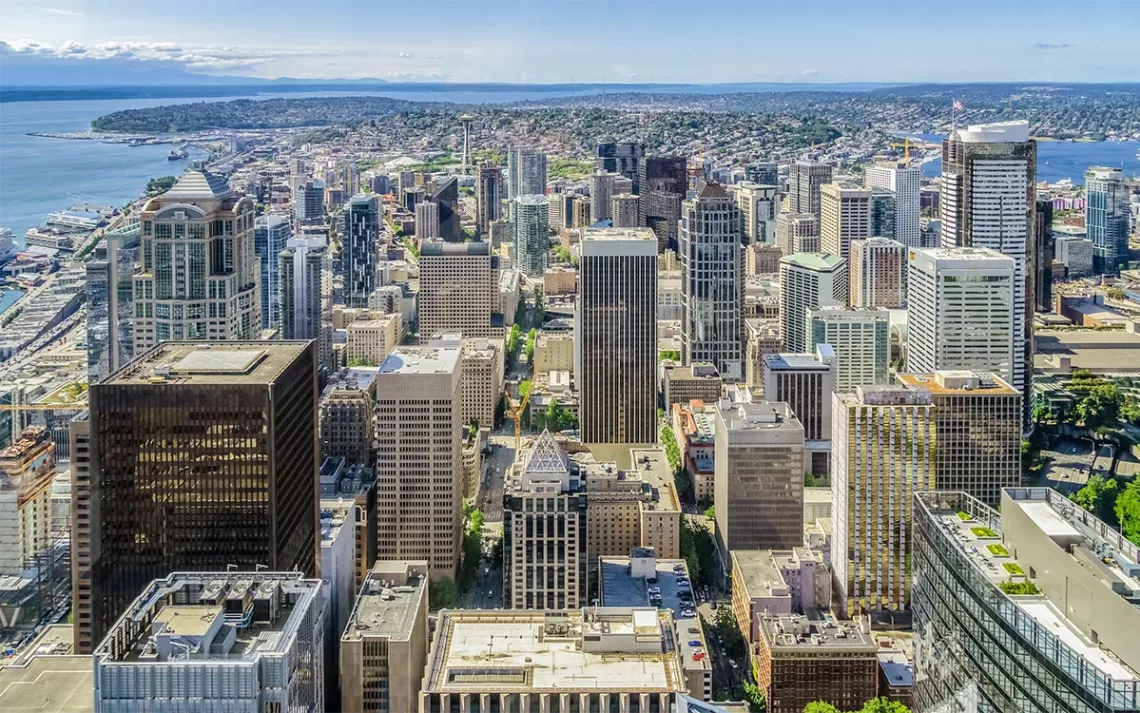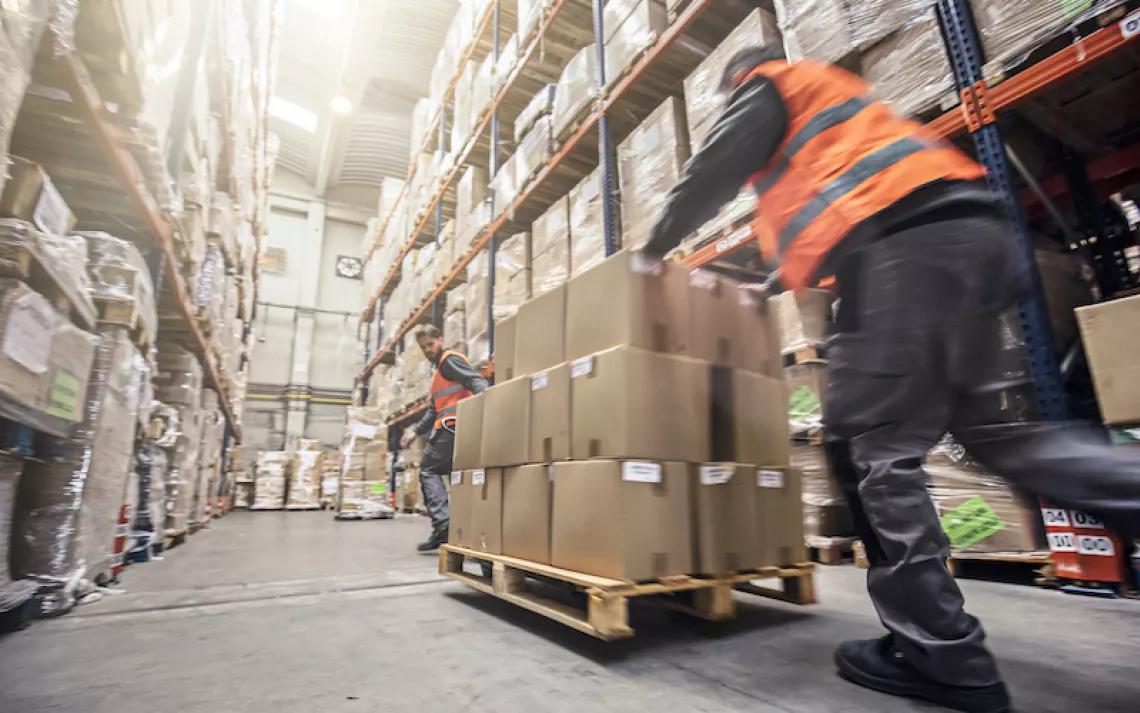City Plans for Urban Density Should Address Affordable Housing
Consumption patterns of more-affluent people may offset carbon savings

Photo by libre de droit/iStock
Cities around the country are considering the climate benefits of increasing urban density. Packing people closer together in smaller, more-energy-efficient housing while adding bike lanes, light rail, and other mass transit, the thinking goes, gets cars off the road, reduces lawns, lawnmowers, strip malls, and other environmental challenges that stem from urban sprawl. Urban infill and densification, studies show, is the cornerstone of reducing the carbon footprint of cities.
But a new paper in the International Journal of Urban and Regional Research suggests that city planners and developers need to make sure these greener, walkable, energy-efficient neighborhoods aren’t just reserved for the affluent. Affordable housing needs to be a central part of the planning—otherwise, the study suggests, the demographics of the people moving into these improved, dense urban areas could negate those carbon gains.
Jennifer L. Rice of the geography department at the University of Georgia began wondering about the unintended consequences of density while studying how gentrification in Seattle was changing the neighborhoods around Amazon headquarters—in particular South Lake Union. In recent years, that area has become a green-living hub—a walkable neighborhood near mass transit with relatively dense, energy-efficient apartments and flats. As younger, more-educated and more-affluent tech workers moved in, housing prices spiked, pushing many people, including nonwhite residents, out of the area and in many cases out of the urban core of the city. The newer residents are often attracted by what they see as a greener style of living, including the ability to ditch their cars and take up less space and energy.
But previous studies show that the consumption patterns of more-affluent people generally have a larger carbon footprint than those with smaller incomes, even if they perceive themselves as eco-conscious. That’s because people with more money tend to take more trips on airplanes, have more appliances and gadgets that use more energy, take up more space, eat more meat and imported foods, and drive their cars more than less-wealthy residents. That, the study authors suggest, could either keep the carbon benefits of density flat or even increase the carbon emissions of some dense neighborhoods in a process they’re calling “carbon gentrification.”
The flipside of the process is that less-wealthy people, whose carbon footprint is smaller, are pushed out of dense areas where they could walk to work or school and into suburban areas with cheaper housing. That means they may need to drive more and adopt generally more carbon-intensive lifestyles.
“That’s where we see a contradiction occurring,” says Rice. “These forms of displacement and gentrification are occurring as these big tech headquarters relocate to urban centers. That could be counteracting the climate goals of places like Seattle, which have put a lot of effort into trying to reduce their emissions because higher-income residents might have higher emissions because of consumption.”
Studies make clear that urban infill is good for climate, but researchers increasingly note that affordable housing must be part of any densification project so that all types of people with a range of carbon footprints can take advantage of mass transit, energy-efficient housing, and other “green” amenities.
“More than one housing justice activist I’ve worked with has watched this process happen over the last five or 10 years and said, ‘You can’t have climate justice without housing justice,’” says Rice. “That means we have to think more about affordable housing. We need more subsidies, more investment, more protections for renters and rent stabilization. And better emissions accounting.”
It’s not just a quandary for Seattle. Other cities, such as Austin, Portland, Boston, and Chicago, are seeing tech companies choose city locations over suburb and could face similar carbon gentrification as tech workers settle down in dense urban areas.
Coauthor Daniel Aldana Cohen of the University of Pennsylvania says the current paper is not antidensity. The study is intended to get climate researchers, urban planners, and policymakers to understand the nuances of investing in density. While density is good, he says, it’s better to tackle issues like housing up front. “The ‘density first, social problems later’ model is a kind of trickle-down form of urbanism,” he says. “You provide these low-carbon amenities to the affluent people first and eventually everyone else will get them. But why should we believe everyone else will get them?”
Affordable housing is not just a problem caused by urban infill. Cities across the country are in the grip of an affordable housing crisis, and on the federal level there’s little hope for change. The Trump administration has repeatedly proposed large decreases to public and affordable housing programs at HUD. But cities like Seattle are wrestling with the issue on their own and are slowly but surely making progress. Last year, the Seattle City Council passed a head tax on businesses earning more than $20 million to fund affordable housing and to fight homelessness. But opposition was so strong, it was rescinded less than a month later.
Last month, however, the city council unanimously approved a Mandatory Housing Affordability (MHA) program designed to increase urban infill and provide more affordable housing. The MHA, which evolved out of a 2014 plan by councilmember Mike O’Brien and was supported by the Sierra Club's Seattle group, allows developers in 27 areas to construct slightly larger buildings, including in some current single-family neighborhoods. In return, developers are required to include a certain percentage of affordable housing in the developments. In total, it’s expected the new MHA, combined with a previous plan, will create 6,000 units of affordable housing over the next 10 years—a good start on the city’s goal of creating 20,000 units of subsidized housing.
 The Magazine of The Sierra Club
The Magazine of The Sierra Club



